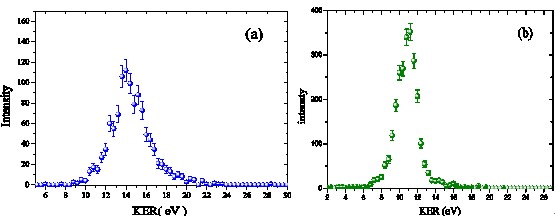The radiation damage of organisms, is not only induced by the direct ionization of high energy particles, but also arises from the damage of DNA by low energy electron impact. Therefore, the investigation of generation mechanism of low-energy electrons is an important topic for life science. Van der Waals clusters, which are bonded by weak polarization forces, can effectively simulate the interaction between biological molecules. Because if a constitute in the cluster is excited, the energy and charge transfer may occur, which result in some environmental enhancement effects: such as Interatomic Coulombic Decay (ICD), Radiative Charge Transfer (RCT) and Electron Transfer Mediated Decay (ETMD), which will provide amount of low-energy electrons. Researchers in the Atomic & Molecular Dynamics Group at Institute of Modern Physics, Chinese Academy Sciences (IMP), taking Ar dimer as model system, performed the first fragmentation experiment in high energy electron impact on small Van der Waals clusters. The kinetic energy releases (KER) in Coulombic explosion were measured, and three environmental enhancement effects had been identified. The kinetic energy distributions of the fragment ions of doubly and quadruply ionized argon dimer were measured. According to the KER analysis, the slow decay process involving the nuclear dynamics – RCT process and the fast decay process – ICT and ETMD were observed. It was concluded that, for the dissociation of (Ar2)2+, the contribution of the outer-shell ionization and the inner-shell ionization had approximately equal contributions. For the dissociation of (Ar2)4+, the contribution of inner-shell ionization was dominant, and the ICD and ETMD was first observed in the electron-impact process. The work has been published in Phys. Rev.A. 88, 042712 (2013) 
Fig.1 Schematic diagram of ICD, ETMD and RCT. (Image by IMP) 
Fig.2 (a) KER distribution of the Ar2+-Ar2+ pair from (Ar2)4+ ions, (b) KER distribution of the Ar+-Ar3+ pair from (Ar2)4+ ions. (Image by IMP) |

